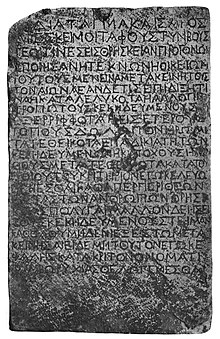The Gospel of Mark, our oldest gospel, ends like this:
“Do not be alarmed. You seek Jesus of Nazareth, who was crucified. He has risen; he is not here. See the place where they laid him. But go, tell his disciples and Peter that he is going before you to Galilee. There you will see him, just as he told you.” And they went out and fled from the tomb, for trembling and astonishment had seized them, and they said nothing (Mark 16:6-8)
Longer endings have been attached as forgeries over the years, but this is how the gospel ends. Many thinkers have thought this ending was good evidence of the empty tomb, because Mark wouldn’t have invented a story with women as witnesses, because the ancient Jewish people of the time were prejudice in that they did not see women as reliable witnesses.
I don’t see this to be a very convincing interpretation. Mark would have been aware of the risen Jesus appearance claims described in the Corinthian Creed/Poetry the apostle Paul quotes:
“That Christ died for our sins
in accordance with the scriptures.
and that he was buried;
That he was raised on the third day
in accordance with the scriptures,
and that he appeared to Cephas, then to the twelve.”
So, why would Mark end his gospel where he does without mentioning the appearances? Clearly, the women finding the empty tomb was the climax of Mark’s story. Why? What seems clear is the issue isn’t one of whether women would be reliable or not, but rather of easily terrified women who told no one what they discovered out of fright. Why is this an issue? Perhaps there were early opponents of Christianity who were saying the tomb was empty because someone stole the corpse, as was a problem at the time (which we can see from the famous Nazareth Inscription), and then some of the disciples went to pay their respects to the dead Jesus and found the tomb empty: Then, the opponents were claiming that those disciples started thinking Jesus was risen and after some hallucinated him

The ending of Mark is actually a pretty good counter to this complaint, because it affirms the truth of the empty tomb, but pauses its transmission to give the male disciples, who Mark says ALL ran away at Jesus’ arrest, the opportunity to have “legitimate” resurrection appearance experiences without being prompted to hallucinate them by empty tomb rumors. And in fact, Matthew employs a similar strategy in his gospel. Matthew invents the idea that there were guards at the tomb to answer the accusation that the disciples stole the body and then lied about it. When reading the gospels, we always have to ask not only what is written, but what purpose it serves, because a “gospel” is historically not simply biography, or history, but “propaganda:” a substantial amount being historical fiction. Helms comments
The syncretic flavor of Mark is at once evident from his reproduction of a piece of Augustan imperial propaganda and his setting it beside a tailored scripture quote. “The beginning of the gospel of Jesus Christ the Son of God” closely matches the formula found on a monument erected by the Provincial Assembly in Asia Minor (1st century BCE): “Whereas… Providence… has… brought our life to the peak of perfection in giving us Augustus Caesar… who, being sent to us and to our descendants as a savior…, and whereas… the birthday of the god has been for the whole world the beginning of the gospel (euaggelion) concerning him, let all reckon a new era beginning from the date of his birth.” (Helms, p. 24)
That’s why Mark’s gospel end’s where it does, and why he invents the detail of hysterical women finding the empty tomb. In Mark’s mind, it made much more sense to have women discover the empty tomb because in his ancient view they would be much more likely to keep it a secret out of terror than if men found the empty tomb.


